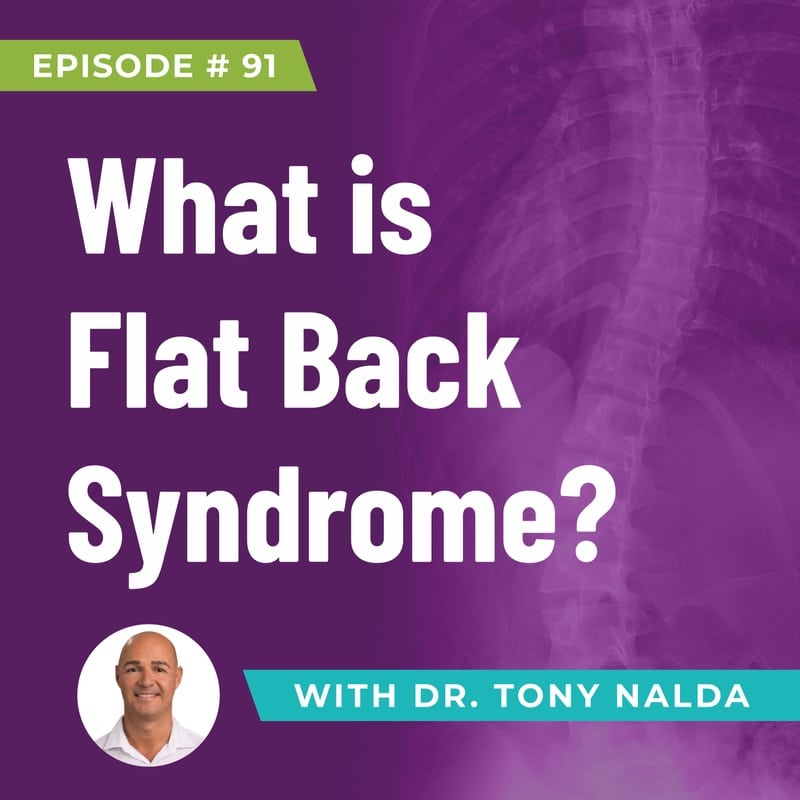Episode 91: What is Flat Back Syndrome?
When talking about spinal health, one distinctive diagnosis that emerges, especially among adults dealing with spinal deformities, is known as flat back syndrome. This condition disrupts the natural curvatures of the spine, impacting its strength, flexibility, and overall biomechanics.
Defining Flat Back Syndrome
The spine, designed with natural curves for strength and flexibility, experiences disruptions when these curves fall outside the accepted ranges. Flat back syndrome occurs when the spine loses its natural lordosis, kyphosis, or both, leading to an abnormal alignment. This condition is often associated with adult spinal deformity, where the spine deviates from its normal sagittal alignment, affecting mobility, gait, and structural stability over time.
Implications of Flat Back Syndrome
As patients age, the impact of flat back syndrome becomes increasingly significant. This condition is notorious for causing a forward-pitch posture, making individuals feel like they are constantly falling forward. The resulting muscle tightness and fatigue can lead to mobility issues, affecting the way people walk and, most crucially, hindering their ability to stand up straight. Addressing flat back syndrome becomes vital for maintaining patients' mobility, preventing associated complications, and promoting overall well-being.
Treatment Approach
Treating flat back syndrome, especially in aging patients, is a priority to ensure they can stand, move, and walk for as long as possible. However, addressing symptoms alone without tackling the root cause—the altered shape and structure of the spine—often leads to unsuccessful outcomes. A successful treatment plan must encompass specific rehabilitative therapies, structural chiropractic care, targeted exercises to enhance core strength and stability, and a comprehensive multimodal approach.
At the Scoliosis Reduction Center, the approach to treating flat back syndrome is multifaceted, combining structural chiropractic care, therapeutic exercises, and physical therapy in a complementary manner to provide the most effective outcomes. By restoring normal spinal health curvatures and alignment, the aim is to strengthen the spine, prevent further progression of flat back syndrome, and address functional concerns that may arise, particularly as patients age.
Understanding flat back syndrome is crucial for anyone dealing with spinal deformities, especially as they age. For more information, listen to Dr. Tony Nalda’s podcast.
Artlist.io 847544
Podcast: Play in new window | Download
Subscribe: RSS
Dr. Tony Nalda
DOCTOR OF CHIROPRACTIC
After receiving an undergraduate degree in psychology and his Doctorate of Chiropractic from Life University, Dr. Nalda settled in Celebration, Florida and proceeded to build one of Central Florida’s most successful chiropractic clinics.
His experience with patients suffering from scoliosis, and the confusion and frustration they faced, led him to seek a specialty in scoliosis care. In 2006 he completed his Intensive Care Certification from CLEAR Institute, a leading scoliosis educational and certification center.
About Dr. Tony Nalda
 Ready to explore scoliosis treatment? Contact Us Now
Ready to explore scoliosis treatment? Contact Us Now








